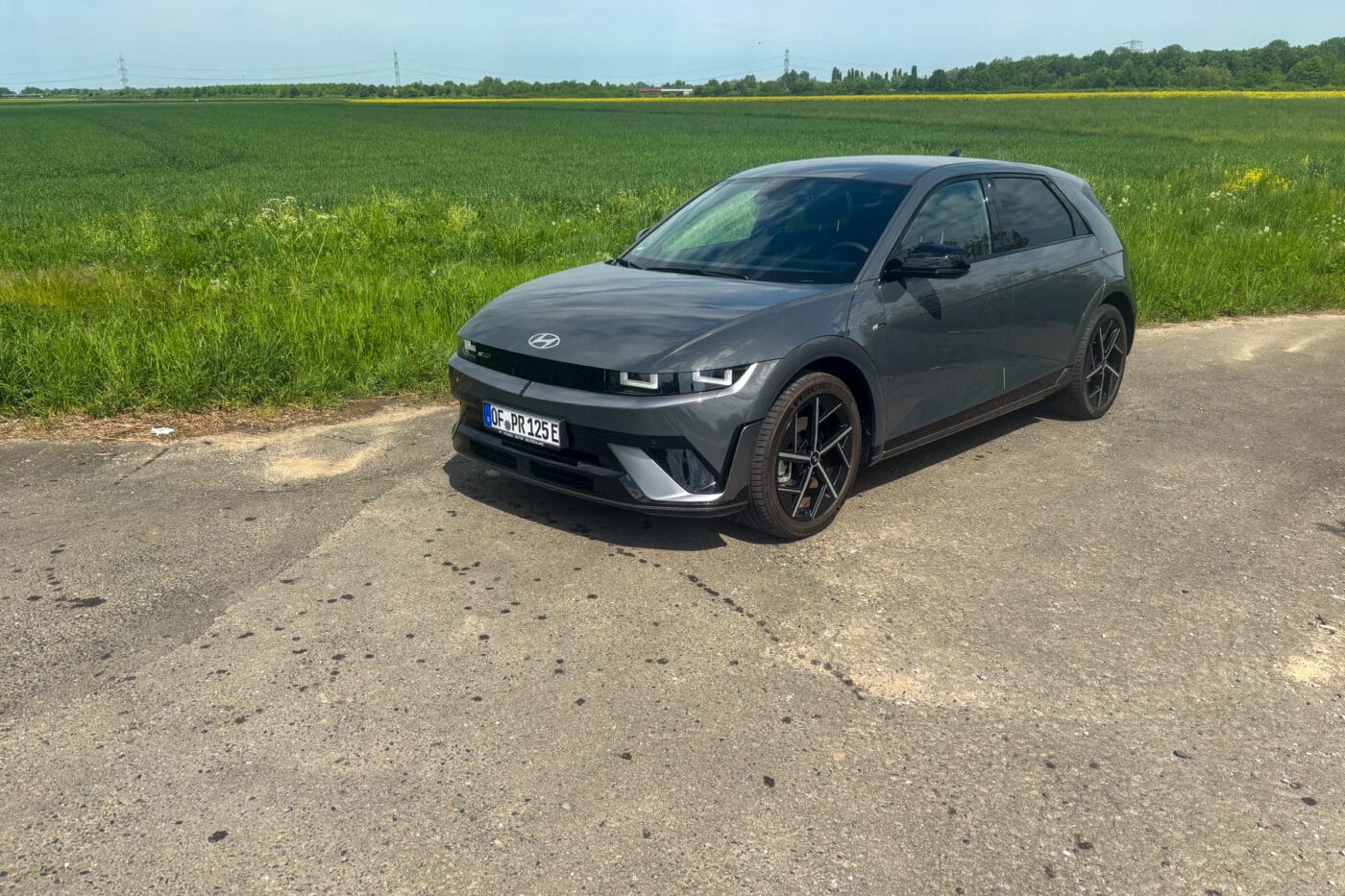
Driving the Hyundai Ioniq 5: more attention to detail
When the Ioniq 5 launched in summer 2021, in the middle of the Covid pandemic, it was a real game changer. It was the first volume segment electric car with 800 volt technology. Until then, only the expensive Porsche Taycan offered 800 volts and could charge from 10 to 80 per cent in 22 minutes. The Ioniq 5, although significantly cheaper, even only needed 18 minutes. At the time, 30 to 40 minutes was still a common charging time in the mid-range with 400-volt systems.
As expected, the reviews were positive when it came to the Ioniq 5’s drive system and fast charging. However, there were minor deductions from the start because Hyundai put a lot of work into the rather unusual design of the Ioniq 5. With all its edges and angles, the design polarises – you either hate it or love it.
The core design has remained the same even after the 2025 facelift. However, it was clear that the Ioniq 5, as the first model on the then completely new E-GMP electric platform, would probably not be perfect. Hyundai has now addressed several criticisms, but not all of them. At least that is the impression after our test with a grey facelifted model, which now has the 84.0 kWh battery and the 168 kW rear-wheel drive. The changes to the design are minimal – you have to know exactly how to tell the ‘new’ from the ‘old’ Ioniq 5 from the outside. The front and rear bumpers are slightly different, and the roof spoiler is around 5 cm longer. And if you happen to have a tape measure with you, you can see that, due to the bumpers, the ‘new version’ is 2 cm longer at 4.66 metres. The width (1.89 metres without wing mirrors), height (1.61 metres) and wheelbase (3.00 metres) remain unchanged.
Not the first update for the Ioniq 5
With the Ioniq 5, however, it has always been more about what Hyundai changes under the bonnet. At market launch in 2021, the Ioniq 5 still had a 72.6 kWh battery in the underbody, which provided a range of 460 kilometres, according to WLTP. The 2023 model year saw a switch to the 77.4 kWh version from the Kia EV6, which not only meant a WLTP range of 507 kilometres, but also the introduction of battery conditioning. The positive reviews from the summer of 2021 were supplemented only a few months later by much more critical tones: Hyundai had not included a battery heater and the otherwise so fast-charging Ioniq 5 was a real snore in winter – with a cold battery, the standard charging process could take an hour, but with a warm battery, a charging time of 20 minutes was possible even at slightly sub-zero temperatures. Without a battery heater, however, it was hardly possible to quickly increase the temperature in the high-voltage battery.
While the change from 72.6 to 77.4 kWh simply involved installing more modules in the underbody, the current jump from 77.4 to 84.0 kWh energy content is primarily due to improved cell chemistry. This now results in a standard range of up to 570 kilometres, a whopping 110 kilometres more than four years ago. At least on paper, but in real terms, depending on how you drive, it should be around 80 kilometres more. Hyundai only ever communicates the energy content installed in the vehicle, i.e. the gross value, not the net usable battery capacity. In the current Ioniq 5, this is likely to be an estimated 79-80 kWh, which is actually available to customers.
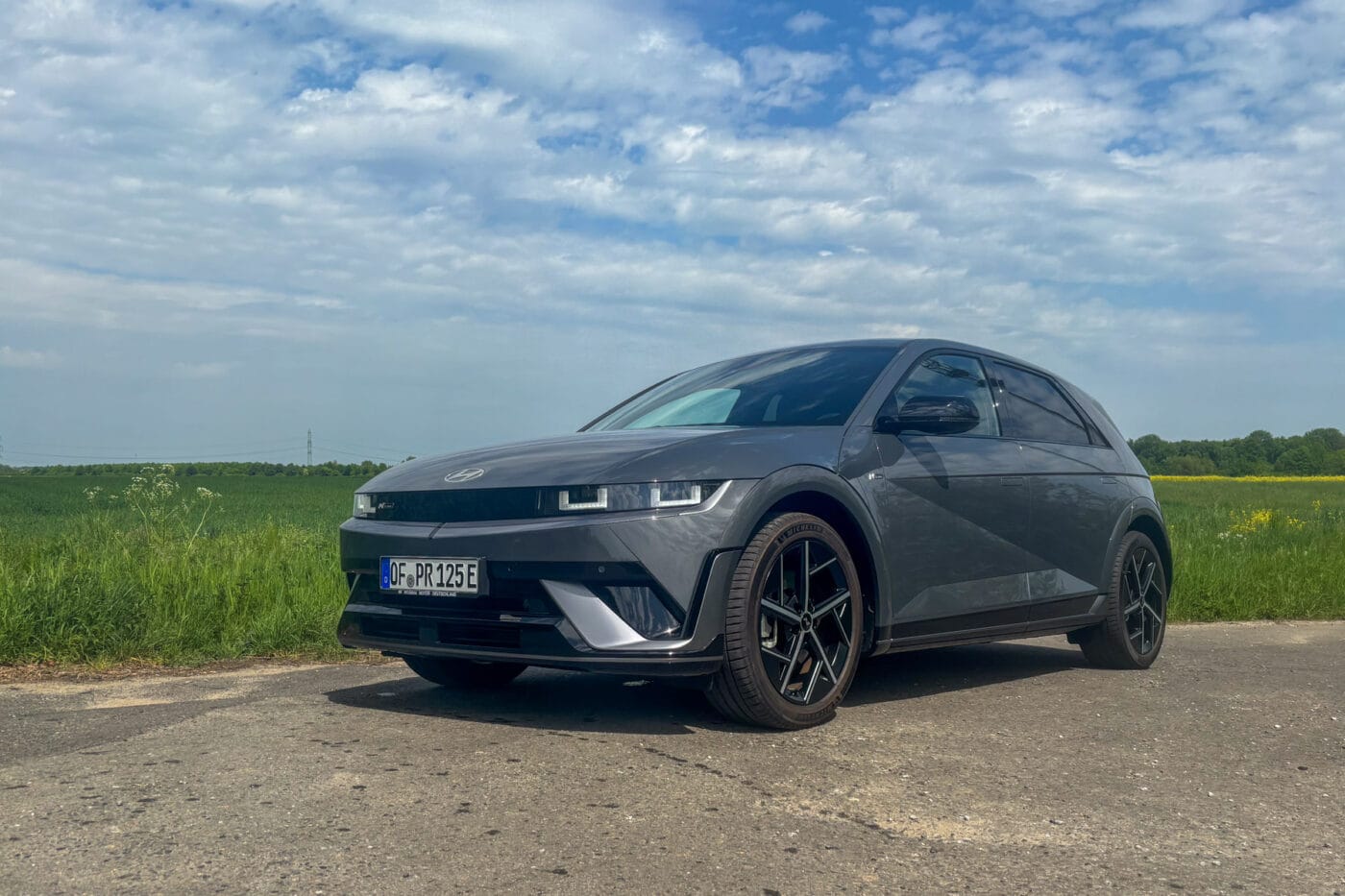
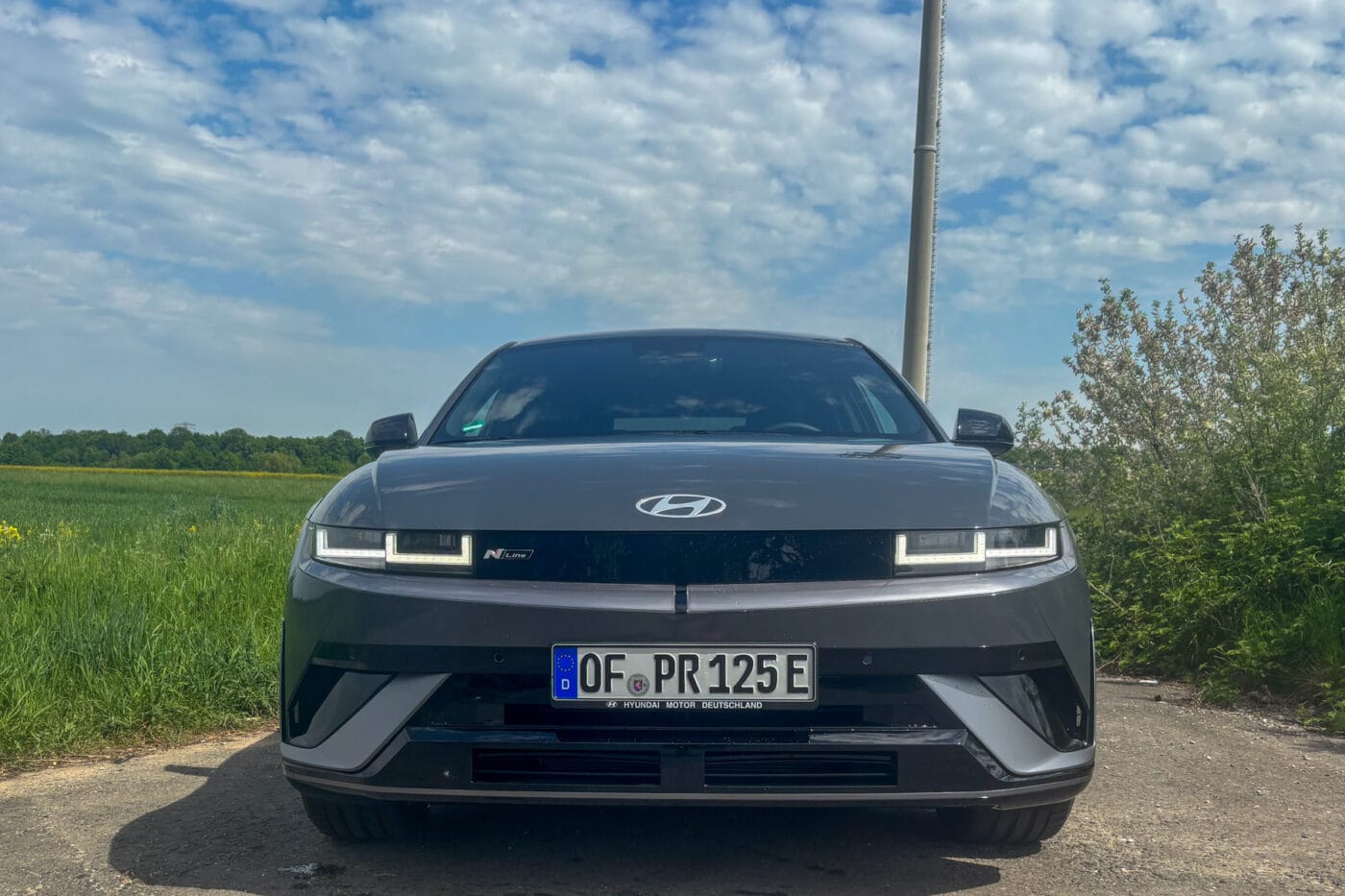

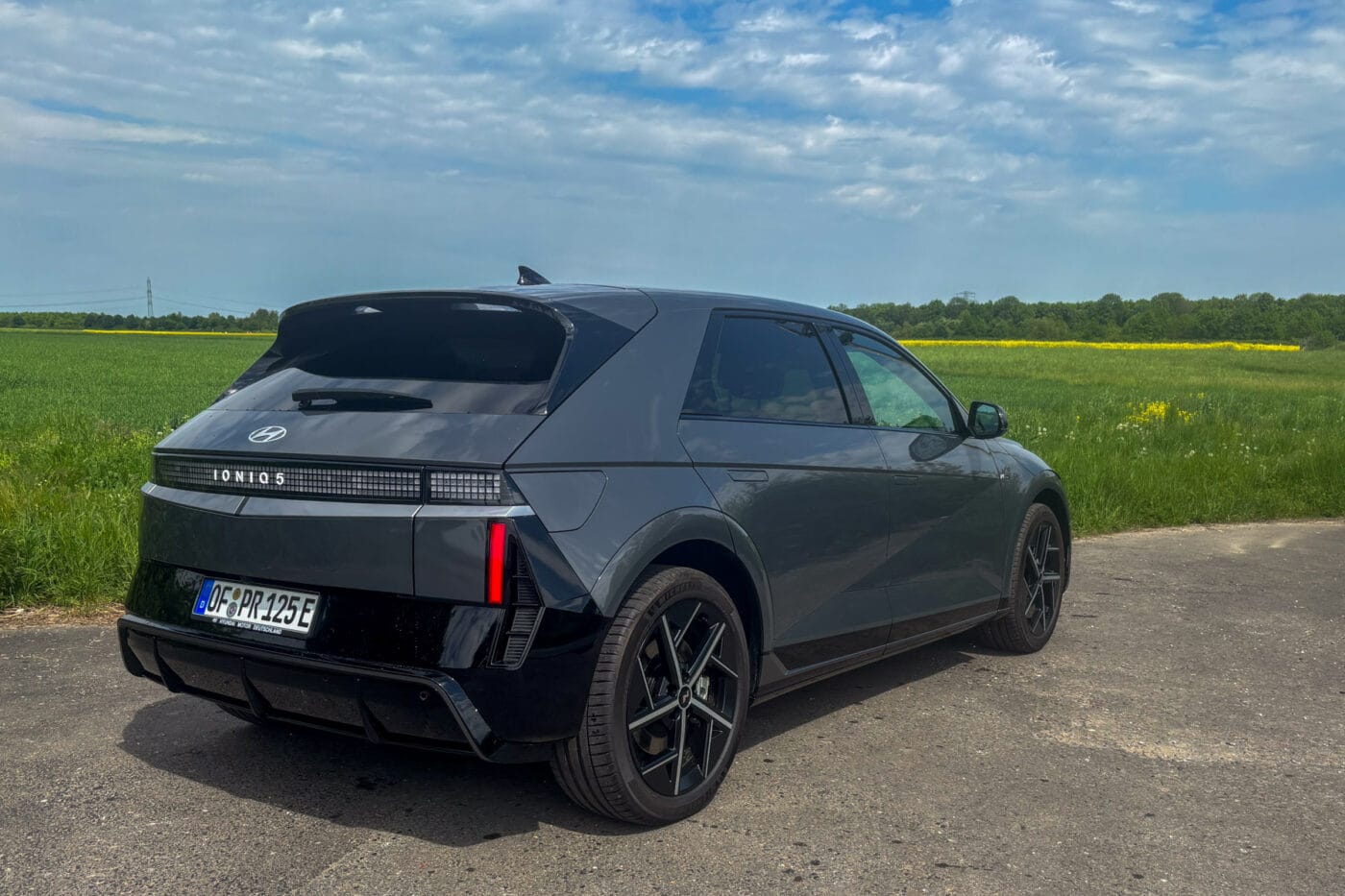
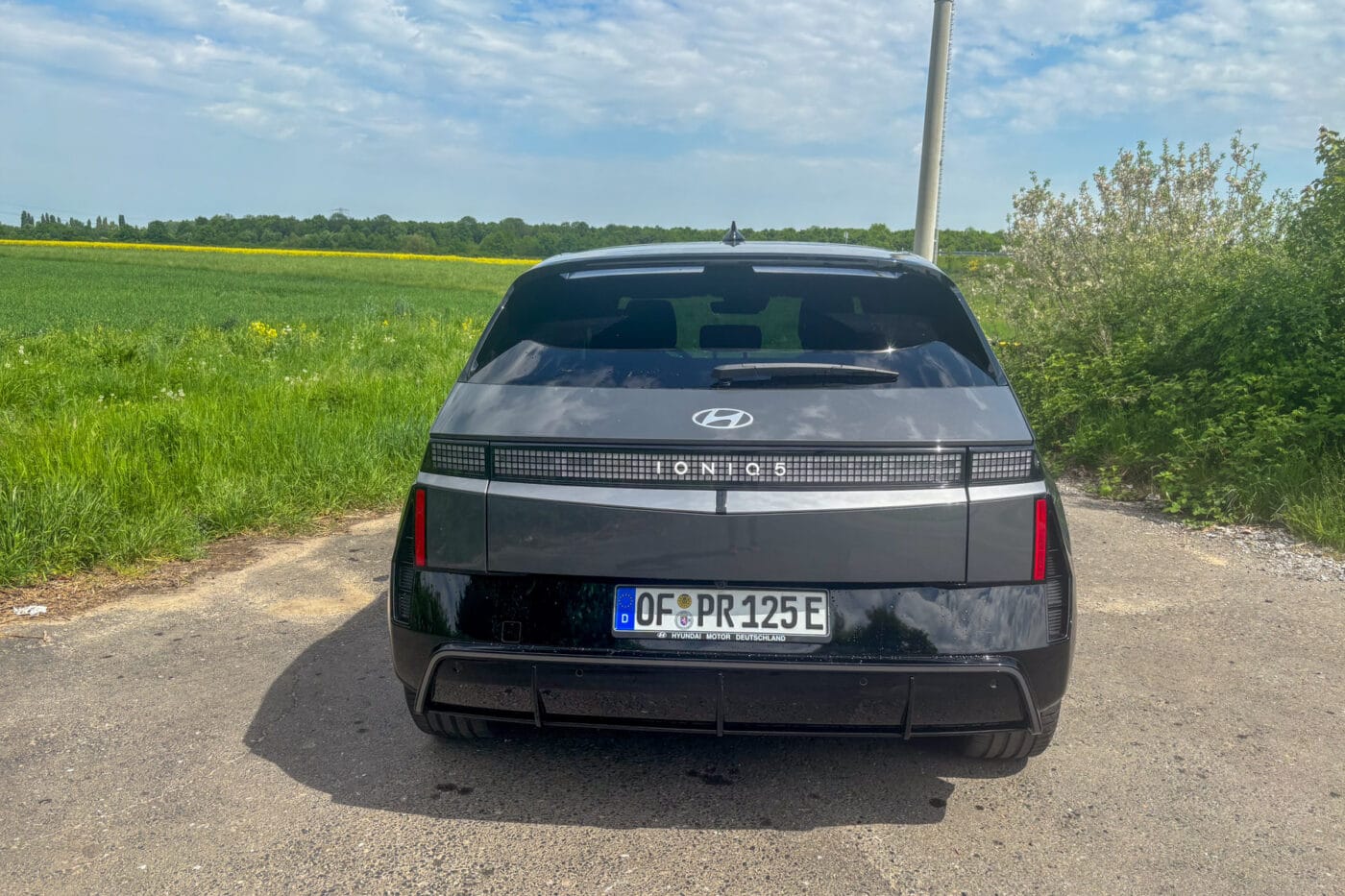
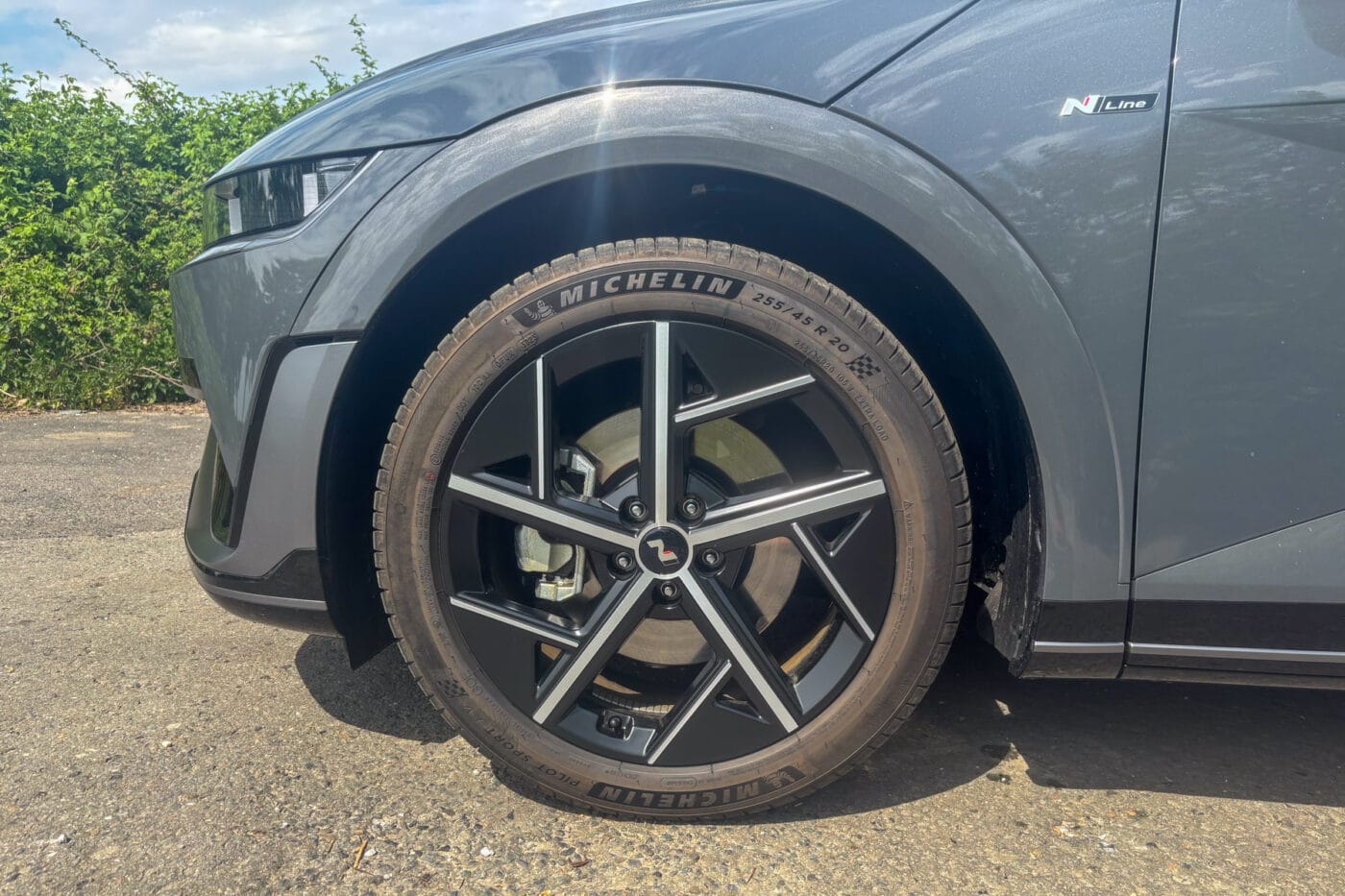
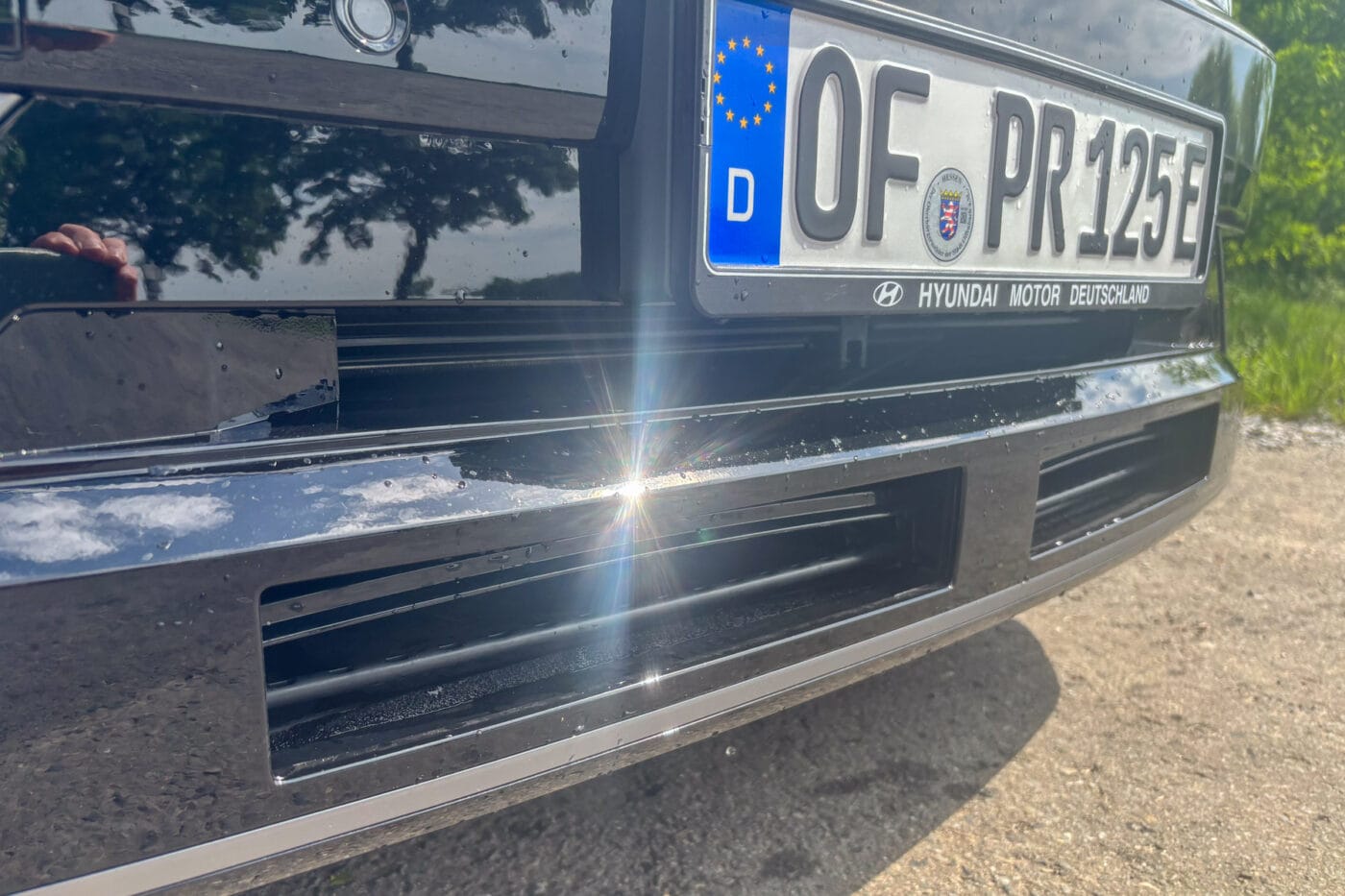
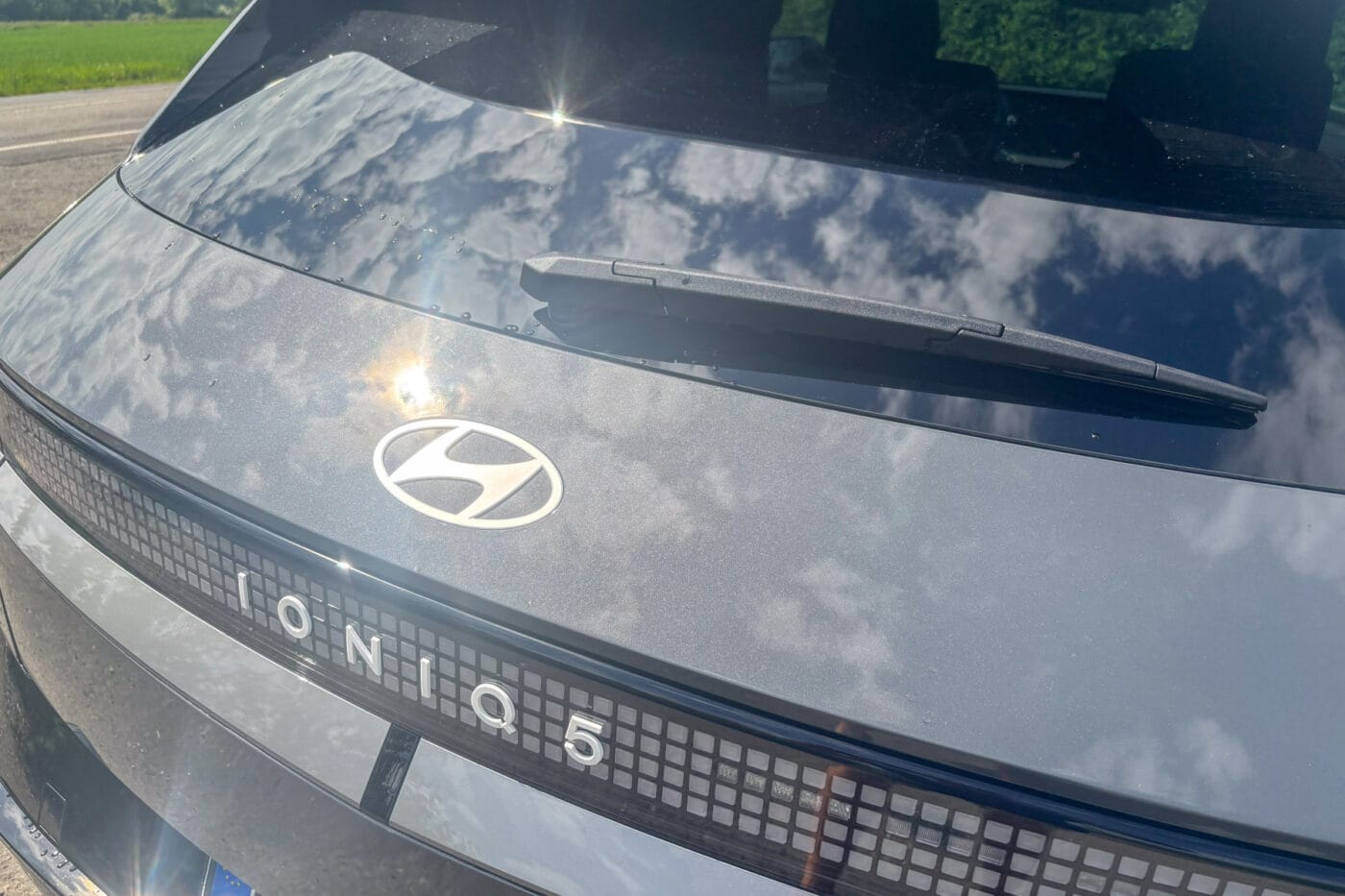
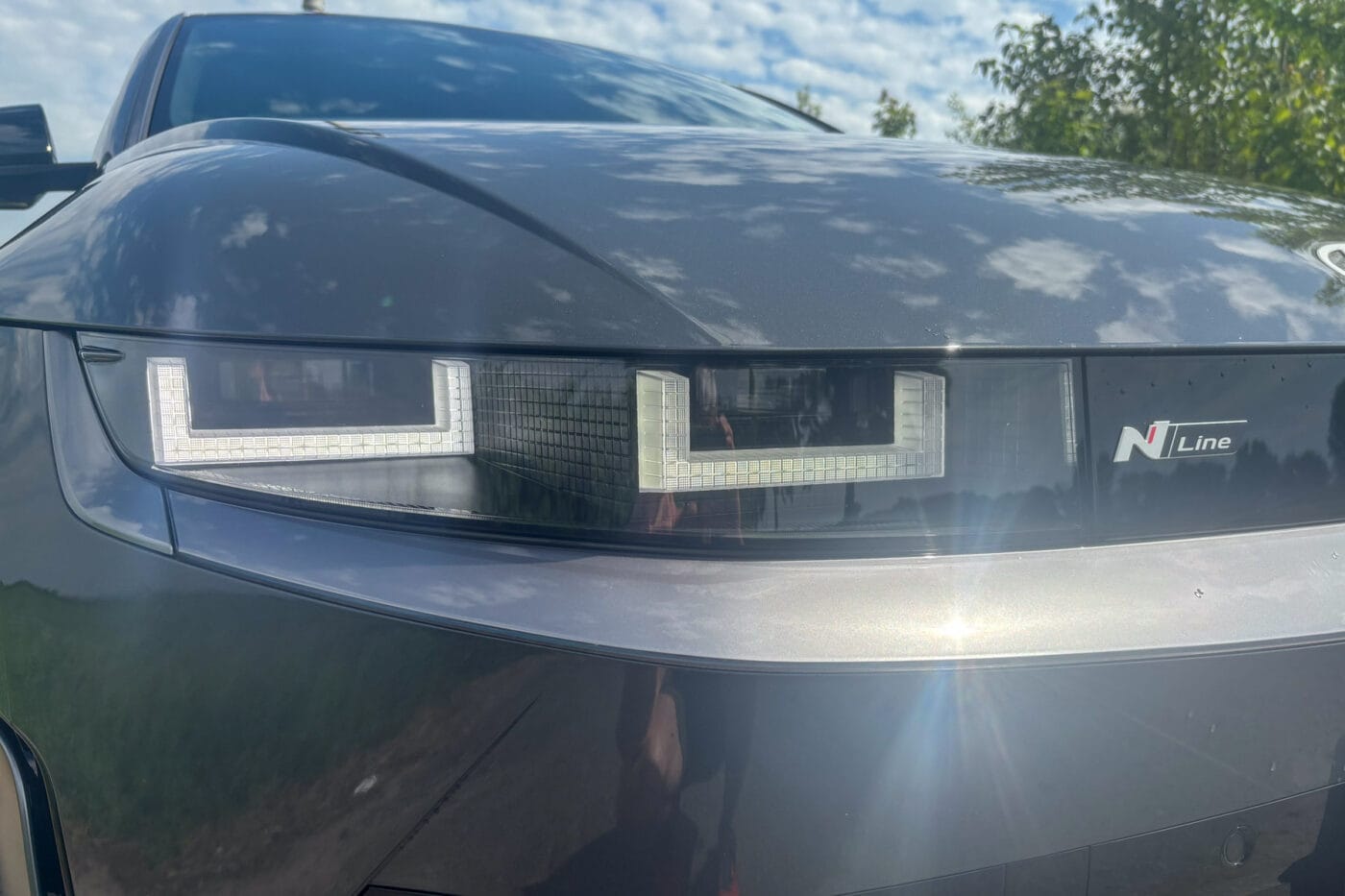
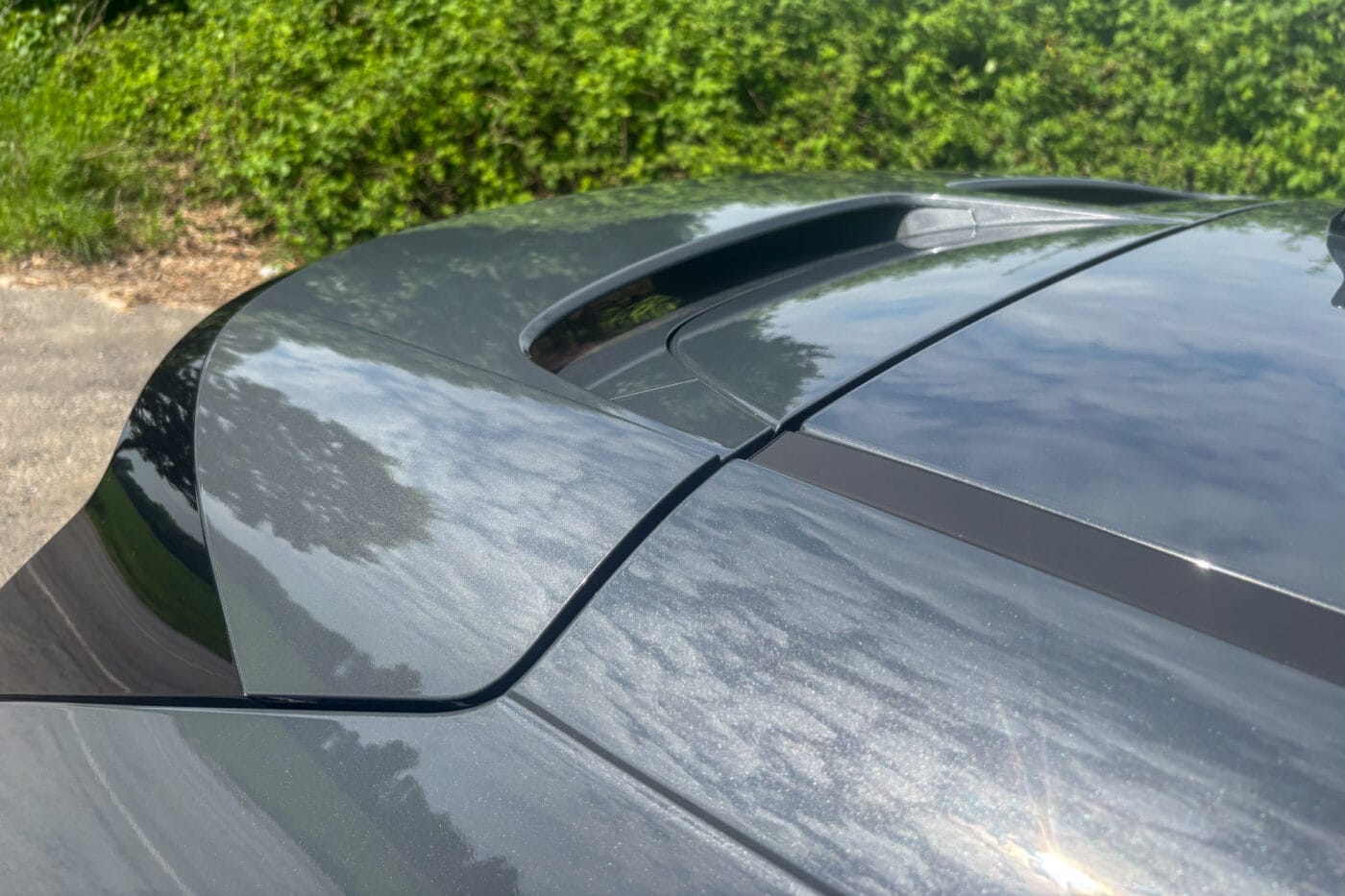
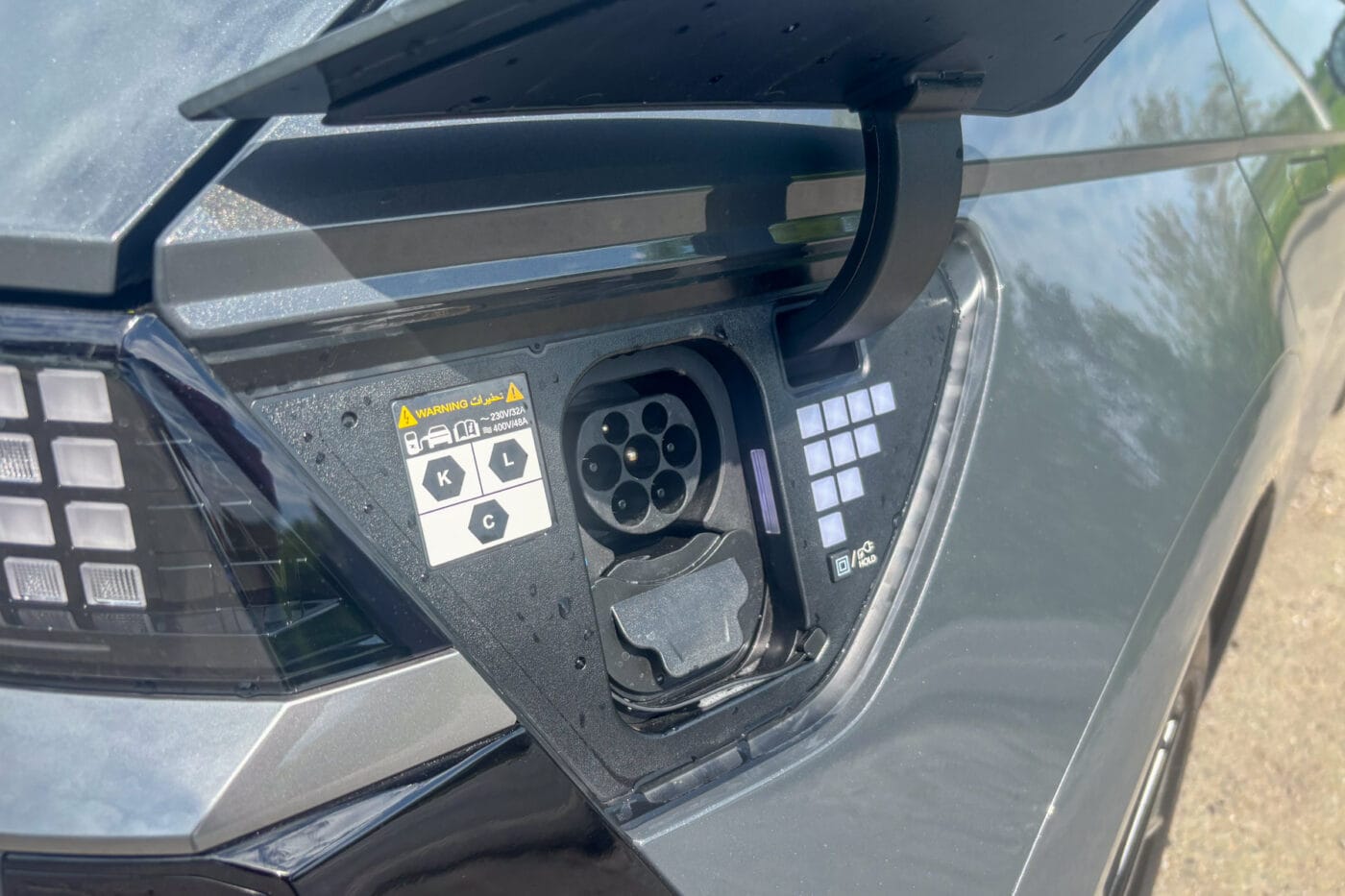
With our test vehicle consuming 17.3 kWh/100 km, this results in a real range of 450 to 460 kilometres, or around 370 kilometres at 80 per cent. On many journeys, including those on the motorway, consumption remained below 20 kWh/100 km. However, it should also be mentioned at this point that our test car was equipped with the ‘N-Line’, which includes a number of sporty features, such as 20-inch rims with 255/45 R20 Michelin sports tyres. If efficiency is more important to you, you can probably get a little more range with a different wheel/tyre combination, no question.
With the ‘N-Line’, the Ioniq 5 looks really dynamic. The car looks sportier than it actually is, especially at the rear with the hinted diffuser and red reflectors: although the ‘N-Line’ is only available with the 84 kWh battery (the basic version has 63 kWh), the test car had the 168 kW rear-wheel drive. Anyone unfamiliar with the ‘N-Line’ could almost think they were looking at an Ioniq 5 N – which, with 478 kW of power, is in a completely different class. With its 168 kW, the Ioniq 5 is easy to drive, and the performance is more than sufficient for everyday use.
However, the ‘N-Line’ equipment has no influence on the charging behaviour; the Ioniq 5 performs similarly to the Kia EV6 we tested in winter, which also has the 84 kWh battery in the current model year. Peak power is 258 kW and that’s at just over 50 per cent charge level. Especially in the lower range between ten and 50 per cent, the output is consistently above 200 kW. However, as the cut-off at higher charge levels has also been optimised and the output does not drop dramatically, the charging time remains at 18 minutes even with the battery, which is now almost twelve kilowatt hours larger. And the fact that we were able to achieve this time, both with the EV6 at temperatures around freezing point and with the Ioniq 5 at double-digit plus temperatures, shows that the battery preconditioning at Hyundai-Kia now works well. In the 2023 version, preconditioning was only possible automatically via the navigation to a charging station; with the current software, this can also be done manually in the battery menu. Although this is a few clicks away from the main screen, it is still quick enough to access.
Although the software has been improved, even beyond the battery menu, it is still one of the biggest points of criticism in my eyes. It can take 40 to 45 seconds to create a route including charging stops – the competition can do this much faster. And even then, the charging planning still has its pitfalls, as it tends to schedule the charging stops too early. This does provide a safety buffer in case consumption turns out to be higher than expected. However, if you can assess your car and your driving style a little, you are still better off with manual charging planning, because the Ioniq 5 can really come into its own from a charge level of ten per cent. And not when you are standing at the fast charger with a battery that is still too full, if you plan a charging stop too early.
On the other hand, another area of the software has improved noticeably- the assistance systems. In numerous tests, from the Kona Electric to the Ioniq 6 saloon, we criticised the ISA speed assistance system. From the first kph too much, the car beeped, often unjustifiably due to incorrectly recognised speed limits and sometimes so obtrusively that it was annoying – and the reflex was to simply switch off an actually useful assistance system. In the current version, Hyundai has toned down the system somewhat, if you like. The tolerance is slightly higher, which lowers the ‘annoyance threshold’ – and I hardly felt the need to switch off the assistant during the two-week test. The false alerts remained, however, when old speed limits were still stored in the maps, for example, from motorway construction sites long gone.
However, we also noticed other useful improvements during the test. For example, the Ioniq 5 has been given a rear windscreen wiper with the facelift. Although this somewhat disturbs the clean look at the rear, function takes precedence over design here: although it wasn’t raining during the current test period, I still remember the 2021/2022 winter test drive and the zero visibility to the rear on a wet motorway very well – and the desire for a simple windscreen wiper.
Another small detail is also much better now, and a relief in winter, for example, if you use it (depending on your preference) on every journey. We are talking about the operation of the seat heating. In the ‘original Ioniq-5’, you had to tap on the ‘Warmer’ field in the touch climate bar in order to select the desired level of seat heating at the top of the touchscreen – two different touch fields that cannot be operated without distraction. In the facelift model, there is now a row of physical buttons in the centre console, including for the seat and steering wheel heating. This is now much better organised.
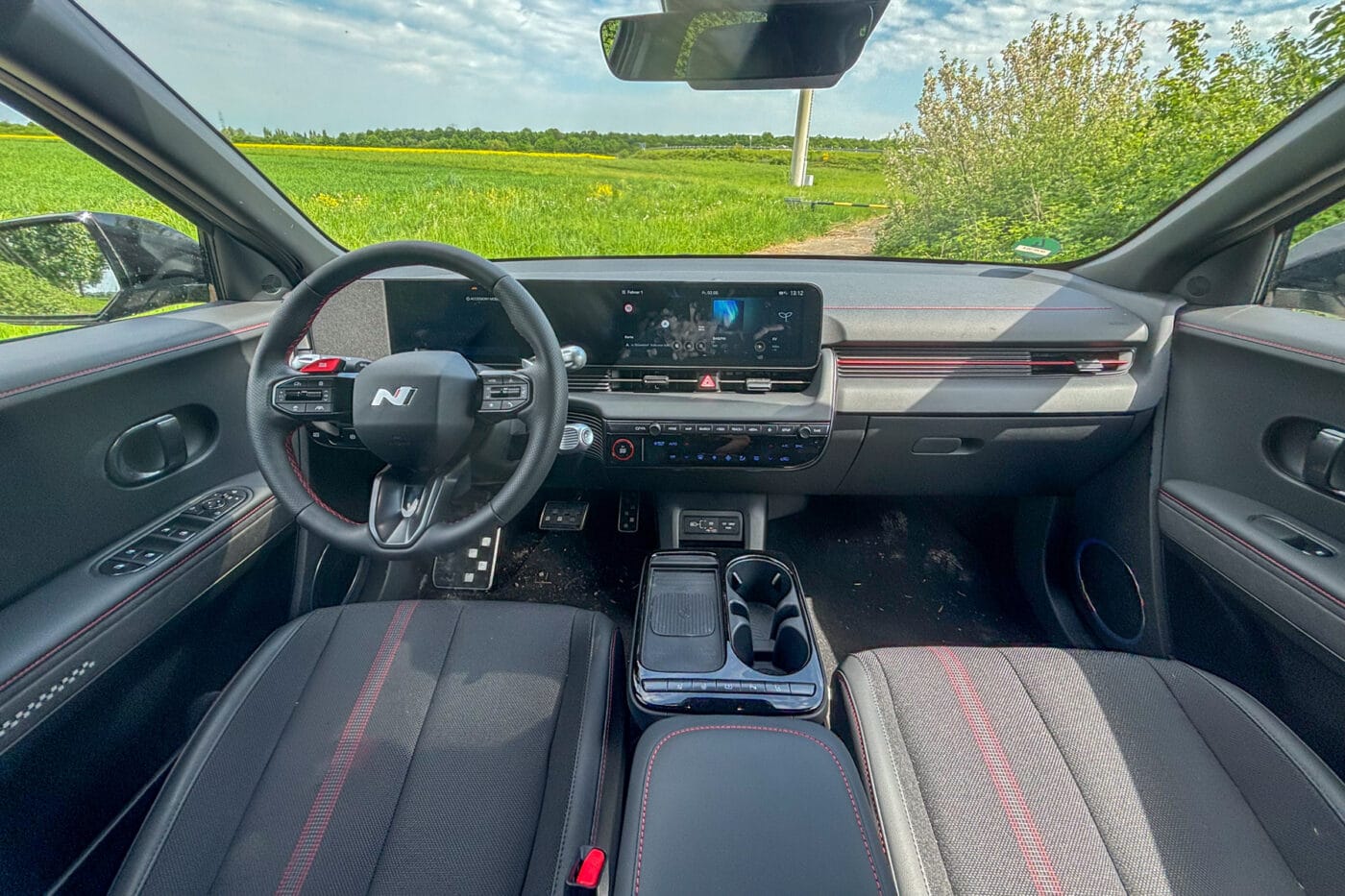
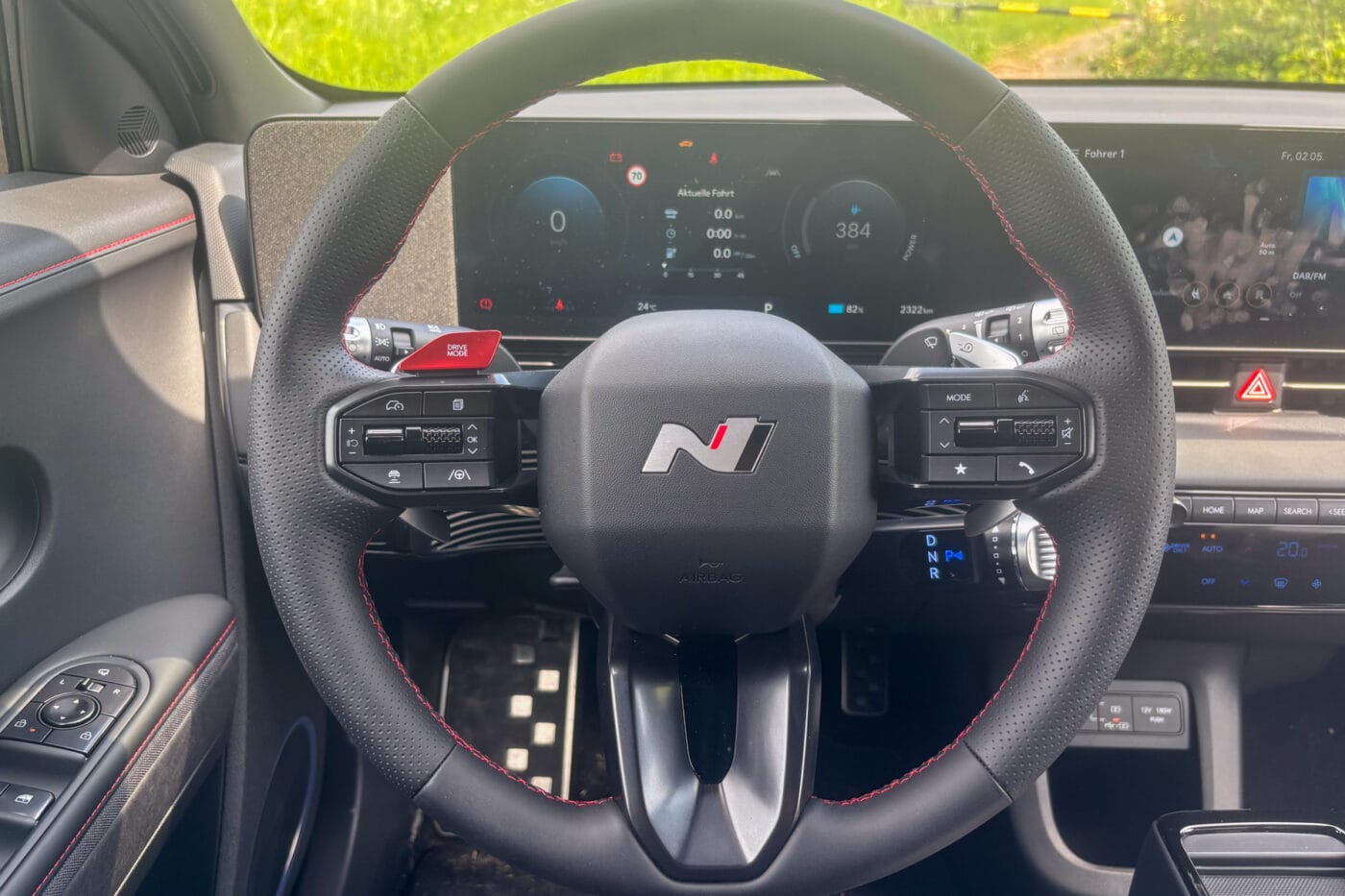
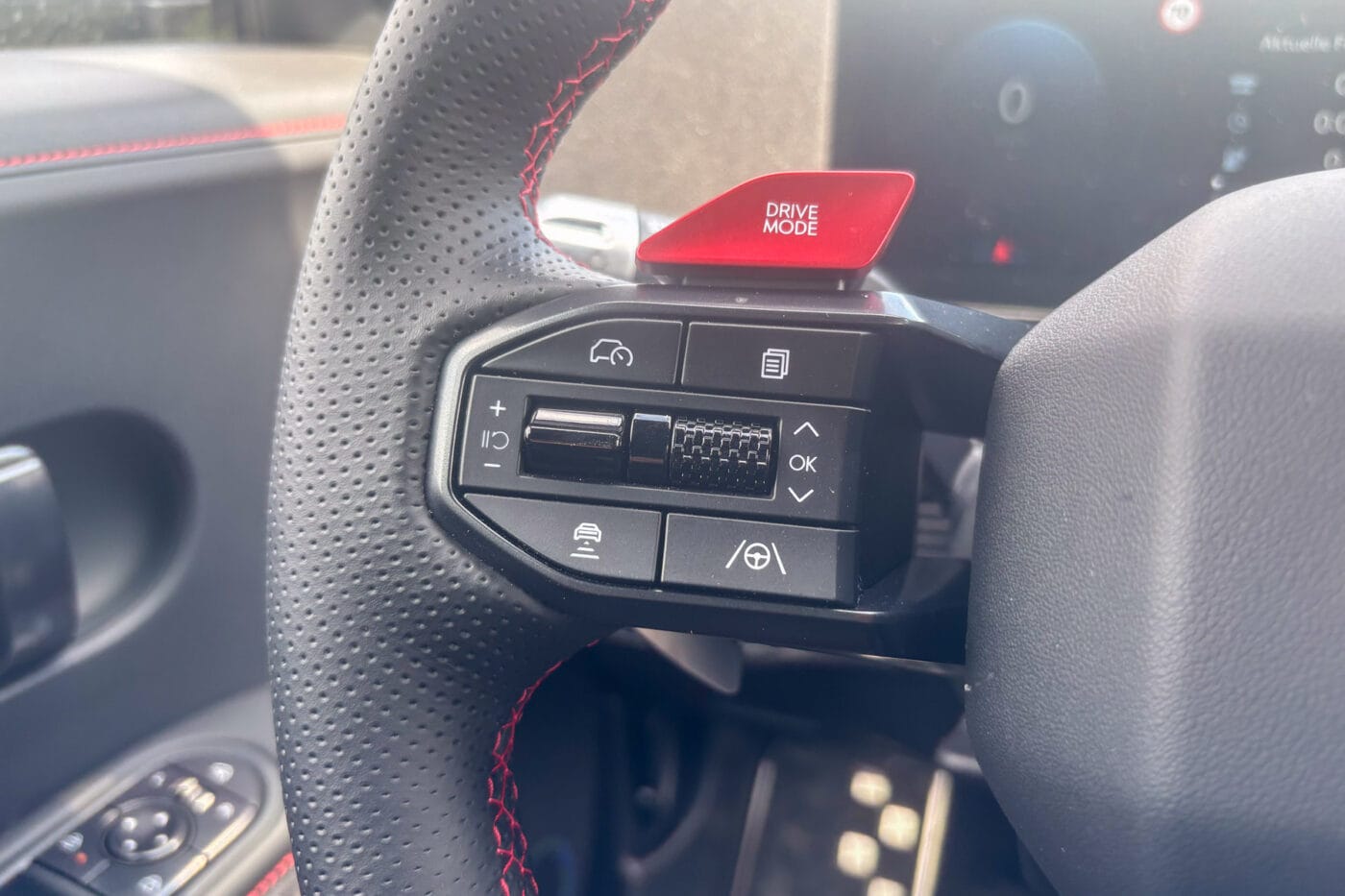
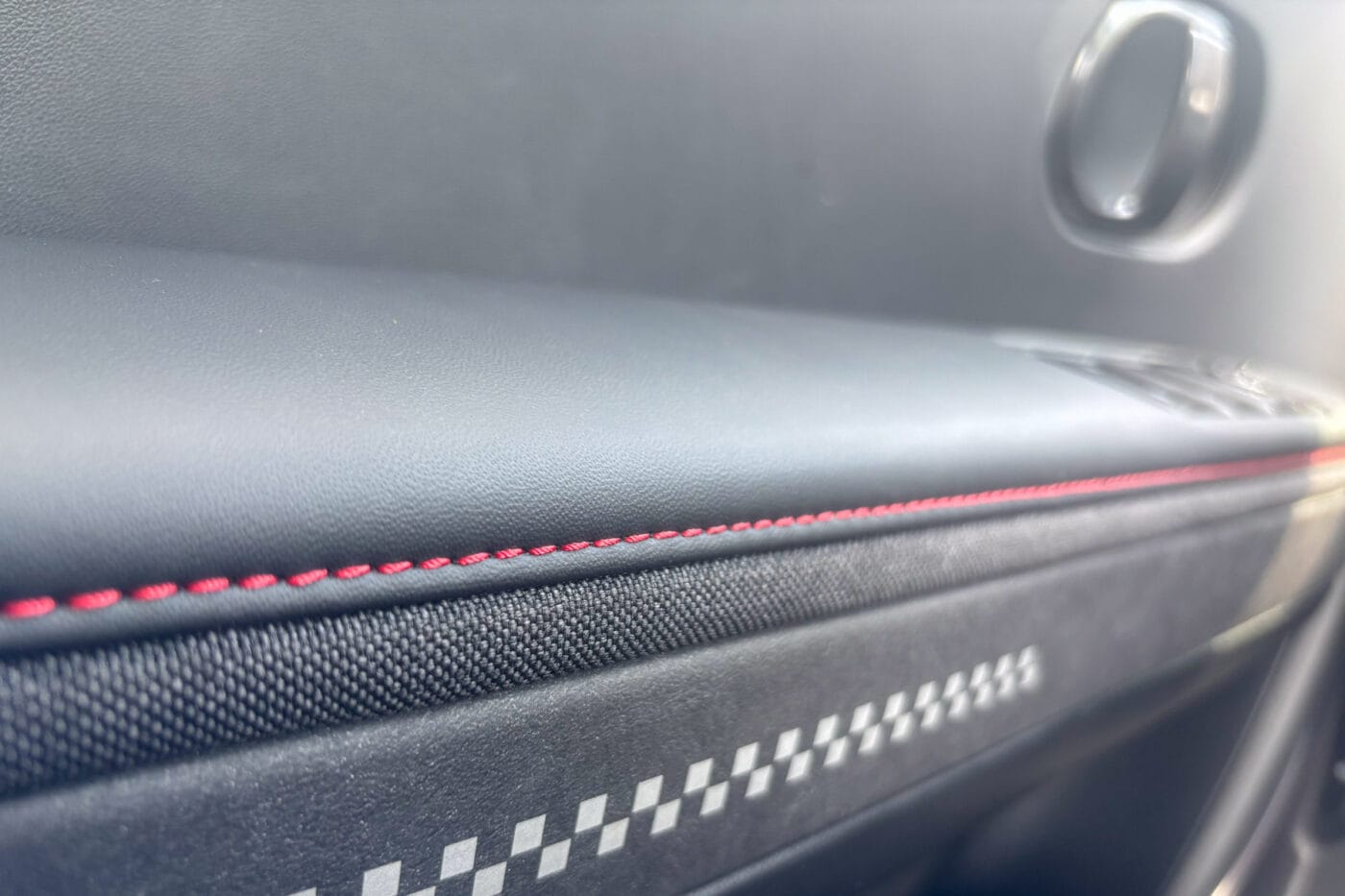

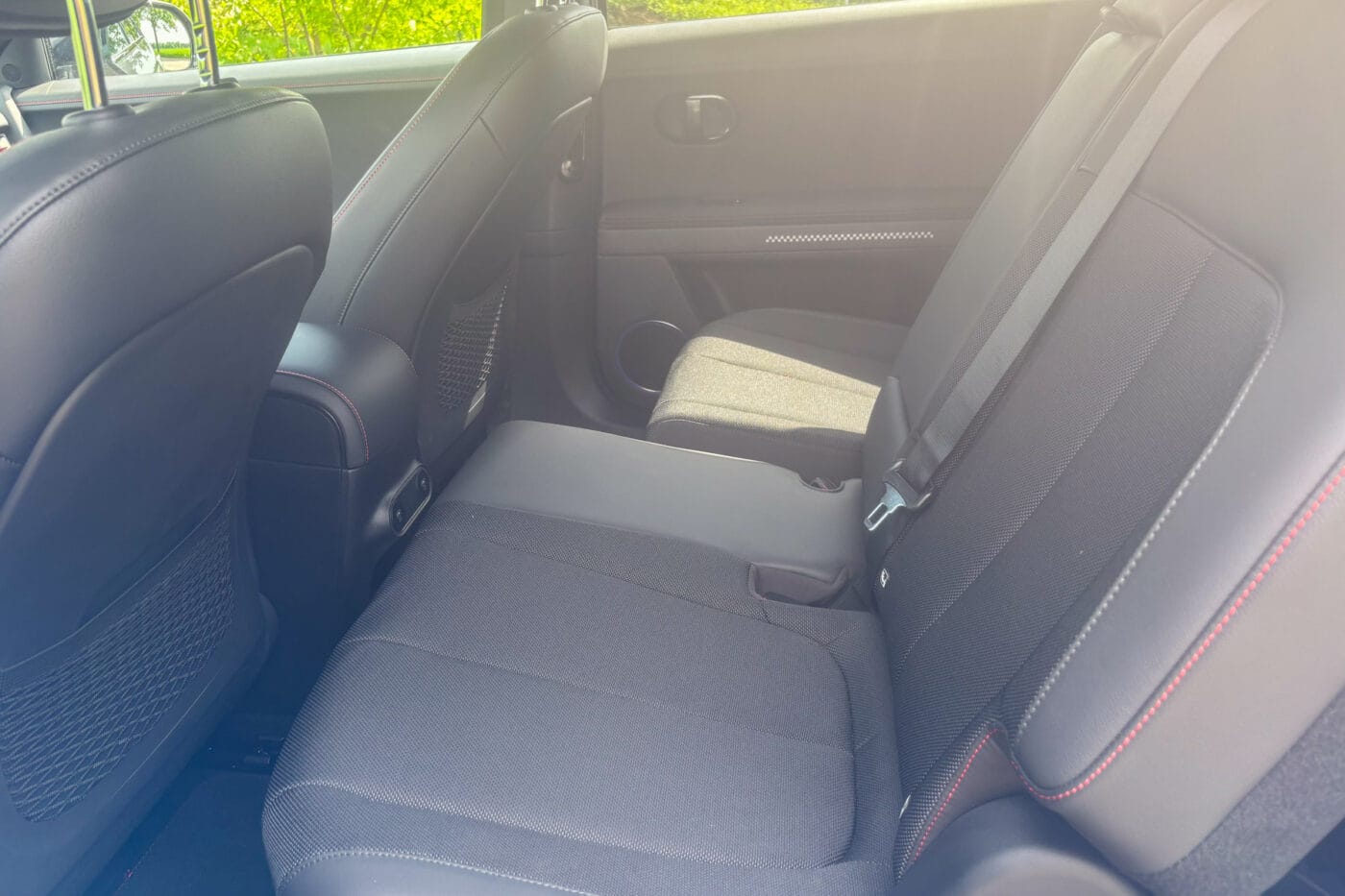
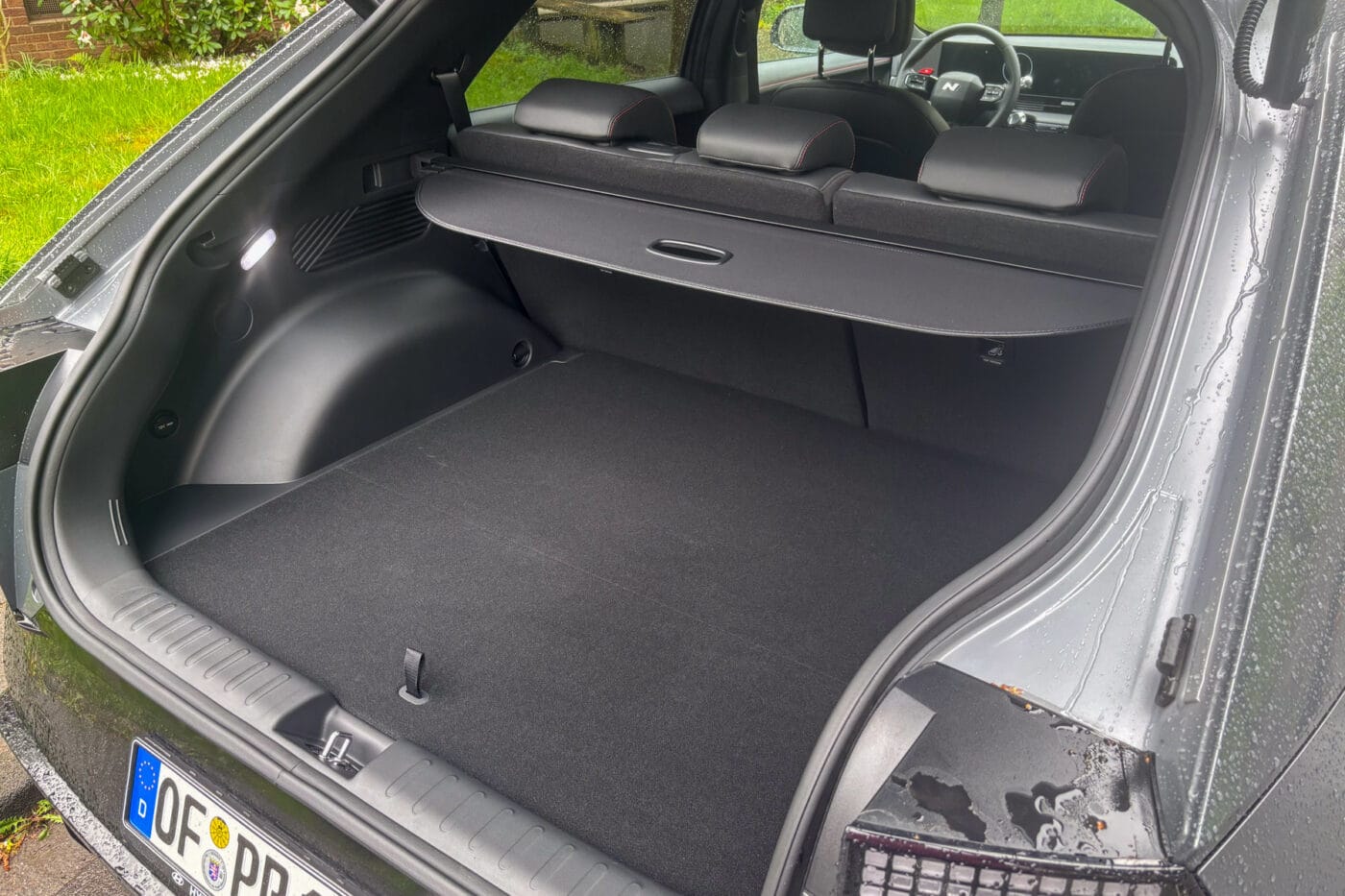

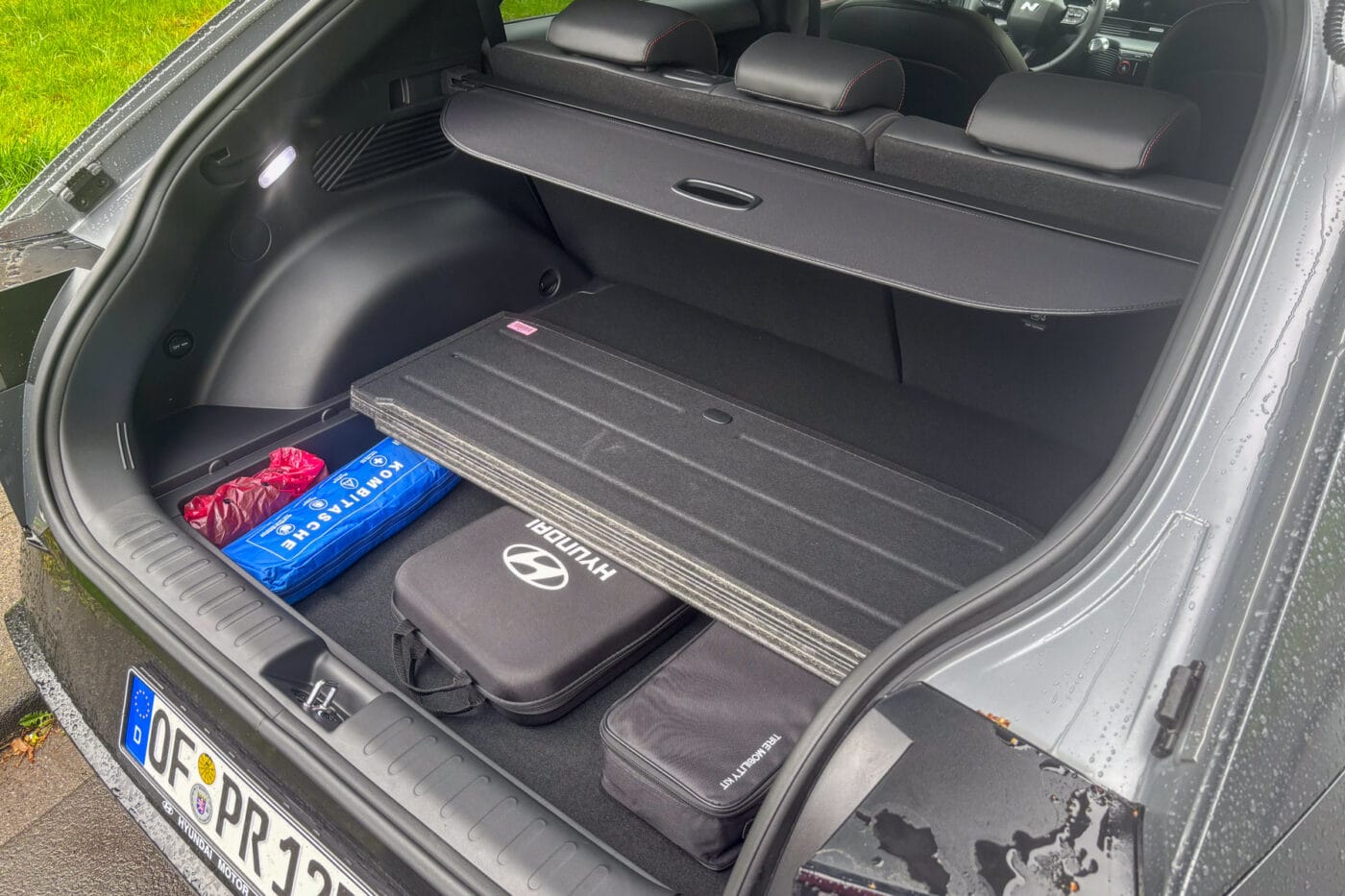
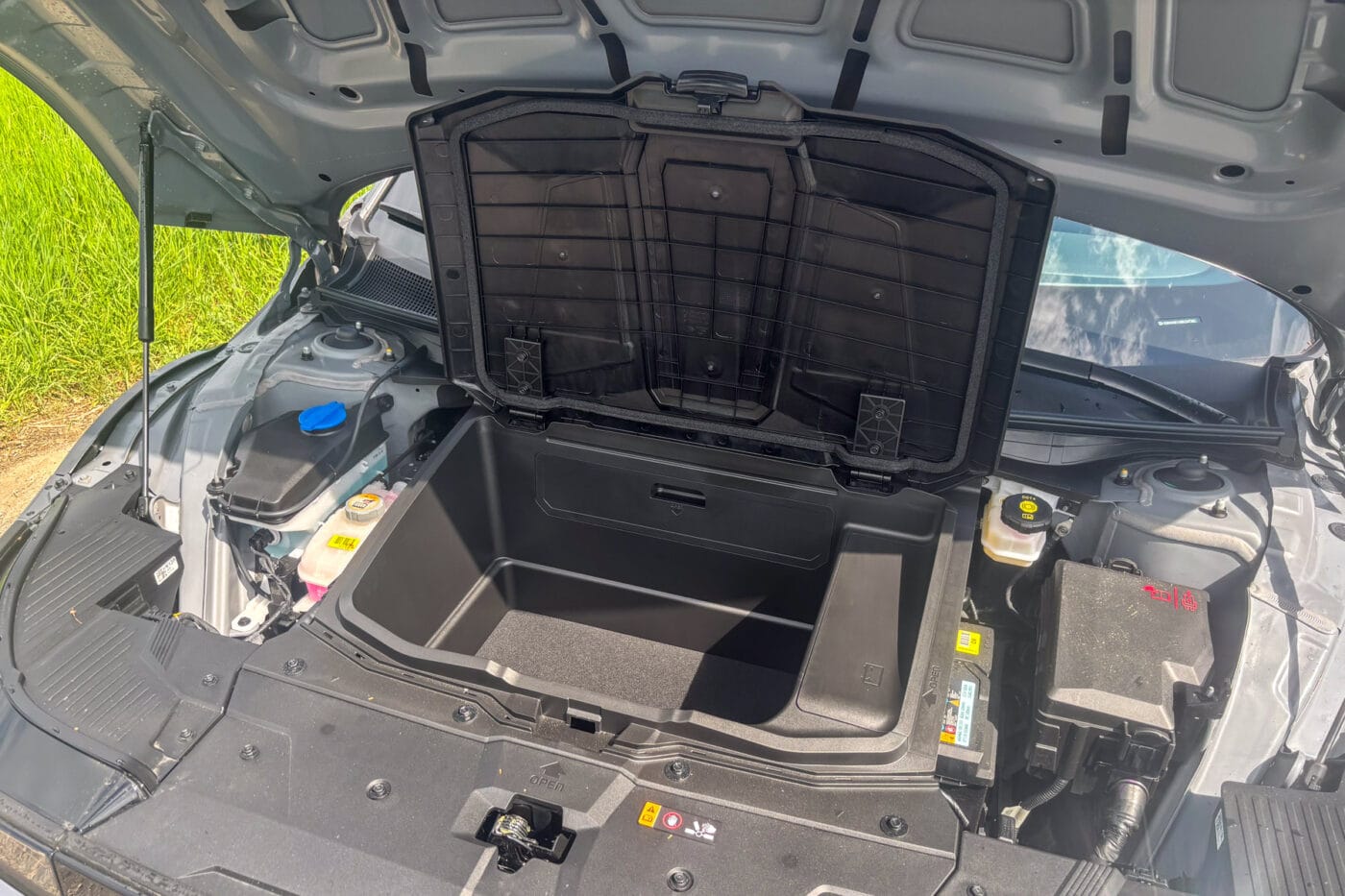
And the panel around the two screens is now black, previously it was light grey. In the facelift model, however, even with the grey seats and grey steering wheel, the display surround remains black.
However, Hyundai was unable to change other aspects of the facelift. For example, the somewhat limited usability of the boot remains, as the rear window at a 45-degree angle severely limits the height of the load compartment. The load compartment can be enlarged slightly when the sliding rear bench forward. However, there is then no cover on the floor, so a deep gap opens up between the pushed-forward rear seats and the load area, and objects from the boot can also get into the door area next to the rear seat backrests. This is not really practical; other electric cars of this size offer more utility here, and while the e-GMP sister model, Kia EV6, with the same battery and 168 kW drive, has increased its towing capacity to 1.8 tonnes, the Ioniq 5 remains at the familiar 1.6 tonnes.
However, we were unable to test one point that needs to be mentioned about the Ioniq 5: There are relatively many failures with the onboard charger called ICCU – if the part fails, the car is no longer roadworthy and has to be towed away. According to customer reports, even vehicles in which the ICCU was replaced after a defect have failed again with the new unit, sometimes with long repair times. Hyundai has also not shone when it comes to recalls on this topic: the German electric car hire company Nextmove says it received recall letters for some of its vehicles (stating the vehicle identification number), but there was no recall for this vehicle on the Hyundai website. For our two-week test, we can only say that the ICCU worked without any problems, but nothing more. The problems appear to occur without warning.
Conclusion
With the facelift, Hyundai has not only brought a larger battery with more range and charging performance to the Ioniq 5, but also small but sensible improvements. The Ioniq 5 2025 is a noticeably better and more mature vehicle than when it was launched four years ago, without losing its very own character. It is a great electric car for long journeys, slightly more compact than a Tesla Model Y, for example, and fun to drive.

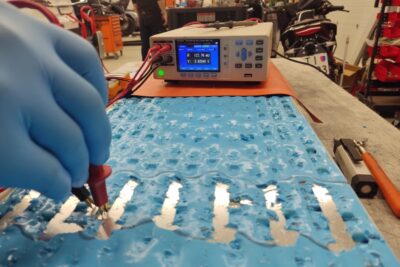

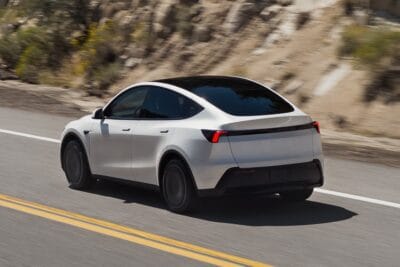
2 Comments